#webapps
Explore tagged Tumblr posts
Link
Are you tired of dealing with server maintenance and scaling issues? Our new blog post on Building Serverless Web Apps Using AWS Lambda and API Gateway has got you covered! Learn how to build scalable, cost-effective web apps with ease.
#aws cloud#serverless#webapps#apigateway#lambda#technology#webApplication#server#buliding#mobiosolutions
7 notes
·
View notes
Text
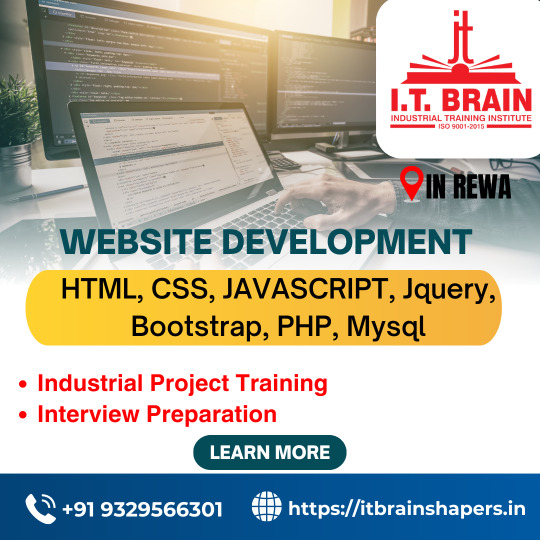
From Zero to Website: The Complete Development Course.
Website development is the art of creating engaging and functional online platforms. Skilled developers use coding languages like HTML, CSS, and JavaScript to design interactive websites.
For more details contact us on 9329566301
visit on: https://itbrainshapers.in
#CSS#WebDevCourse#WebsiteDevelopment#WebDesignTraining#WebDevelopmentSkills#LearnToCode#WebsiteDesignCourse#WebDevTraining#DigitalSkills#WebDevelopment#WebDev#WebDesign#WebDeveloper#Coding#Programming#CodeLife#TechCareer#LearningToCode#FullStackDevelopment#WebApps#ResponsiveDesign#WebTechnologies#WebBuilders#CodeCommunity#cricket#rewa#satna#monsoon
3 notes
·
View notes
Text
Meine erste Paid promotion!
2 notes
·
View notes
Text
Boost Efficiency with Custom CRM Solutions
We build web-based CRMs that automate: ✔ Sales pipelines ✔ Customer interactions ✔ Lead tracking
Upgrade your business efficiency today! 📩
0 notes
Text
Why MERN Stack is a Game-Changer for Web Development
In today's fast-paced digital world, businesses require scalable, high-performance, and efficient web applications. One of the most powerful solutions for modern web development is the MERN Stack, which consists of MongoDB, Express.js, React.js, and Node.js. This technology stack has revolutionized web application development by enabling seamless front-end and back-end integration using JavaScript.
What Makes MERN Stack Stand Out?
1. Full-Stack JavaScript
MERN allows developers to use JavaScript for both front-end and back-end development, ensuring consistency and reducing the need for context switching between different programming languages.
2. High Performance
Node.js, a core component of the MERN Stack, is known for its non-blocking, event-driven architecture. This ensures efficient handling of multiple requests simultaneously, making applications highly responsive and performant.
3. Scalability & Flexibility
MongoDB, a NoSQL database, provides a flexible schema that can accommodate growing data needs, making it easier for businesses to scale their applications as required.
4. Reusable Components
React.js simplifies the development process with its component-based architecture. Developers can create reusable UI components, leading to faster development and easier maintenance.
5. Vast Community Support
MERN Stack has a large and active developer community that continuously contributes to updates, enhancements, and troubleshooting resources. This extensive support ensures that developers have access to the latest tools and best practices.
Why Choose MERN for Your Business?
At Rlogical Techsoft, we leverage the MERN Stack to build robust, scalable, and high-performance web applications. Whether you're a startup or an enterprise, MERN can help you achieve your digital transformation goals efficiently. Its versatility makes it an ideal choice for various applications, including e-commerce platforms, social networks, and enterprise-level software.
Are you considering MERN Stack for your next project? Let's discuss your requirements and how we can help you build a cutting-edge web application!
🔗 Read more: MERN Stack for Web Development
#MERNStack#WebDevelopment#ReactJS#NodeJS#MongoDB#JavaScript#SoftwareDevelopment#usa#uk#canada#Australia#TechTrends#RlogicalTechsoft#FullStackDevelopment#Innovation#DigitalTransformation#WebApps#Startups#EnterpriseSolutions
0 notes
Text
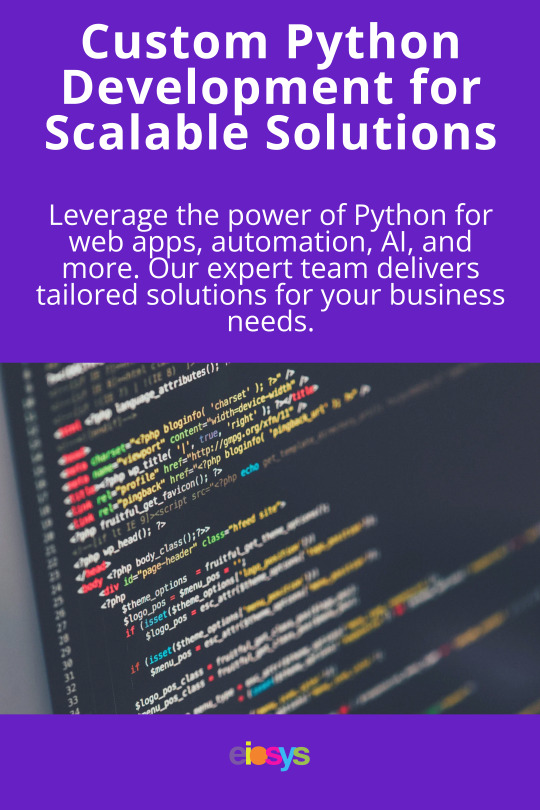

Custom Python Development for Scalable Solutions!
Unlock the potential of Python for web apps, AI, and automation. Scalable, fast, and efficient solutions tailored for your business!
Learn more about our Python development services here
0 notes
Text
Is Flutter the Right Choice for Web Development?

Are you curious about whether Flutter is suitable for web development? Explore how Flutter enables developers to create high-performance, visually appealing web applications using a single codebase. This article delves into the benefits and challenges of utilizing Flutter for web projects, helping you determine if it's the right choice for your development needs.
#flutter#webdevelopment#flutterweb#crossplatform#appdevelopment#techstack#webapps#frontenddevelopment#uiux#softwaredevelopment#flutterdev#mobiletoweb#coding#techtrends#webperformance#flutterforweb#hireflutterdev
0 notes
Text
Redefining Business Success Through Web Application Development
In 2023, 90% of companies have accelerated their digital transformation. Why? Because web apps are not just a technical endeavor but a strategic asset!
✅ 30% Increase in Customer Engagement
✅ 20% Revenue Boost
✅ 25% Operational Cost Reduction
Invest in a future of limitless possibilities with Mobio Solutions!
#webappdevelopmentservices#webapps#digitaltransformation#operationalefficiency#technology#mobiosolutions
2 notes
·
View notes
Text
Building Your First App with No-Code Platforms
In today's fast-paced digital landscape, anyone can become a creator with the help of no-code platforms. You no longer need to know how to code to bring your ideas to life. With these tools, anyone from a busy entrepreneur to a curious hobbyist can create useful applications that solve real problems. This guide will walk you through the process of building your first app step by step, without writing any code.
No-code platforms let you design applications visually by using pre-built components and workflows. This approach can improve your workflow efficiency and save money. Below, we outline the steps to help you start your app development journey.
Understanding No-Code Platforms
No-code platforms enable users to create applications through graphical interfaces instead of traditional coding. This means you can drag and drop elements, design the look, and set up the logic all without writing a line of code.
Some of the most popular no-code platforms include:
Bubble: Great for web apps, it allows for a high level of customization, with more than 8,000 templates available.
Adalo: Focused on mobile apps, making it notably easy for beginners to create functional applications.
Airtable: It combines spreadsheet simplicity with powerful database capabilities, streamlining project management tasks.
AppGyver: Ideal for building mobile apps quickly, offering a user-friendly interface backed by impressive functionalities.
The convenience of no-code platforms means you can create apps tailored to your needs without learning complex coding languages.
Step 1: Define Your Idea
The cornerstone of your app development is a clear idea. To formulate your concept, consider these questions:
What specific problem is your app addressing?
Who is your intended audience?
Which features are crucial for your idea to become a reality?
Spend time fleshing out your concept. Consider using a mind map or outline to visualize and organize your thoughts. For example, if you want to create a budgeting app for students, determine essential features like expense tracking and budgeting tips.
Step 2: Choose the Right No-Code Platform
With many no-code platforms to choose from, pick one that suits your project's goals. Here are some factors to keep in mind:
Ease of Use: Select a platform that feels comfortable to navigate, especially if you're new to app development.
Features and Flexibility: Ensure the platform offers the functionalities you envision for your app, such as user logins or payment processing.
Integration Capabilities: Check if the platform can connect with other tools you plan to use, like email marketing software.
For instance, if you're creating a task management app, you might find Airtable or Bubble to be particularly helpful due to their organization features.
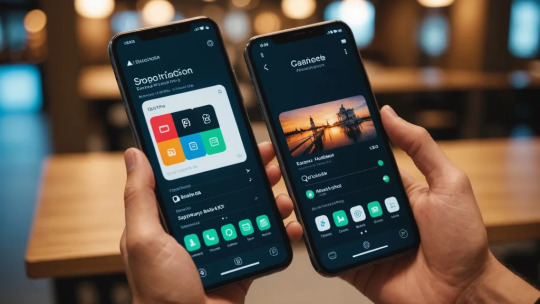
Step 3: Sketch Your Wireframe
Before diving into the actual build, create a wireframe to outline your app’s layout. A wireframe provides a visual guide for the user experience and interface and doesn't need to be perfect—just an initial layout showing how everything fits together.
You can use tools like Figma or even sketch it on paper. Visualize the main screens of your app. If, for example, your app is a recipe sharing platform, you might sketch a homepage with featured recipes, a search bar, and links to user profiles.
Step 4: Design Your App
With your wireframe in place, it's time to flesh out your app’s visual design. Most no-code platforms feature customizable templates, which streamline the design process.
Here are principles to guide your design:
Consistency: Keep the color scheme and font style uniform throughout your app to create a cohesive look.
Simplicity: Avoid clutter. A clean design makes navigation intuitive.
Accessibility: Ensure that users with disabilities can adequately use your app. Implement features like alt text for images and proper contrast between text and background.
If you're designing an ecommerce app, for instance, make sure that product pages are clear and concise for a better shopping experience.
Step 5: Build Your App
Once your design is ready, it’s time to build your app using your chosen no-code platform. Begin by dragging and dropping your components.
Pay attention to these aspects:
User Authentication: If your app has user accounts, set up secure login systems to manage access.
UI Elements: Incorporate buttons, sliders, and forms to enhance user interaction.
Database Connection: Link your app to a database if it needs to store or retrieve user-generated content. Platforms like Airtable offer built-in database tools.
Utilize tutorials and community forums to troubleshoot any issues that arise.
Step 6: Iterate and Test
After building a prototype, it is vital to test your app and iterate based on user feedback. Get insights from friends, family, or potential users who can provide unbiased opinions.
Consider the following areas during your testing phase:
Functionality: Confirm that all features perform as intended.
User Experience: Gather feedback on the ease of navigation and clarity of information.
Performance: Measure how quickly your app responds. Statistically, a one-second delay can yield a 7% reduction in conversions.
Improving your app is an ongoing process, so be ready to adapt based on feedback.

Step 7: Launch Your App
When you're confident about your app's performance, it’s time to launch. Depending on your app's nature, this could involve publishing it on websites, app stores, or distributing it personally for beta testing.
To optimize your launch:
Create Buzz: Leverage social media, email promotions, and your website to build anticipation.
Gather Feedback: Encourage early users to leave reviews or suggestions after trying out your app.
Plan for Updates: Stay prepared for updates based on initial user feedback.
The hard work leads to this moment, and your launch is just the beginning of your app's journey.
Step 8: Maintain and Update Your App
After launching, prioritize maintaining and updating your app. Analyze user feedback and analytics to pinpoint areas needing attention. Regular updates will keep your app functional and relevant in the ever-changing tech landscape.
Consider maintaining:
New Features: As your user base grows, you may want to implement features that enhance usability.
Bug Fixes: Regular checks guarantee your app operates smoothly.
User Engagement: Keep users informed about updates to foster loyalty and interest.
Your dedication to ongoing improvement will drive your app’s long-term success.
The Journey Ahead
Creating your first app without writing code is a rewarding venture. With no-code platforms, your creativity can shine without technical limitations.
By following this guide—defining your idea, selecting the right platform, and iterating based on feedback—you can transform your concepts into functional applications. As the no-code movement grows, more individuals have the opportunity to step into the world of app development.
Start your journey today, and imagine the possibilities ahead as you watch your app positively impact its users.
#NoCode#AppDevelopment#Entrepreneurship#Startups#AI#Technology#Innovation#Business#Automation#DigitalTransformation#Productivity#SoftwareDevelopment#Bubble#Adalo#Airtable#LowCode#TechTrends#WebApps#MobileApps#FutureOfWork
0 notes
Text
🚨 Website vs Web App – What's the difference? 🤔 Whether you're browsing or interacting, websites and web apps serve different purposes. Learn which one is right for you! 🌐💡
#WebsiteVsWebApp#WebDevelopment#TechExplained#WebApps#Websites#TechTalk#AppDevelopment#UXDesign#FrontendDevelopment#CodingLife#DigitalTransformation#TechInnovations
0 notes
Text

🚀 Get Custom App Solutions Tailored to Your Business Needs! 📱
Unlock the full potential of your business with custom app solutions designed just for you! Whether you need a mobile app, web application, or enterprise software, we create seamless, user-friendly, and scalable solutions to help you grow.
🌟 Why Choose Us?✅ Fully customized to your needs ✅ Scalable & high-performance apps ✅ User-friendly & intuitive designs
📩 Let’s Build Something Amazing!👉 Visit us: https://www.globalkeyinfosolution.com
#CustomAppDevelopment#BusinessSolutions#AppDesign#AppDevelopment#TechSolutions#SoftwareDevelopment#MobileApps#WebApps#EnterpriseSolutions#DigitalTransformation#ITServices#CustomSoftware#GrowYourBusiness#BusinessGrowth#ScalableApps#UserFriendly
0 notes
Text
Struggling With Complex Data-Binding in Your Web Apps?
Managing complex data-binding in modern web apps can be overwhelming. Our skilled Knockout.js developers provide efficient solutions with clear, dynamic two-way data binding, ensuring that your app’s UI and data are perfectly synchronized.
We specialize in building scalable, fast-loading applications that reduce complexity and improve performance, making your user experience seamless.
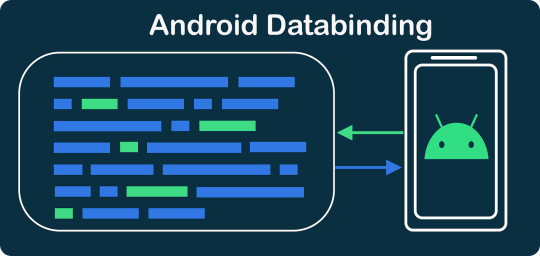
#KnockoutJS#WebDevelopment#JavaScript#FrontendSolutions#DataBinding#WebApps#ScalableTech#TechExperts#HiddenBrains#KnockoutJSDevelopers
0 notes
Text
Mobile vs Web Apps Choose the Right Path for Your Business
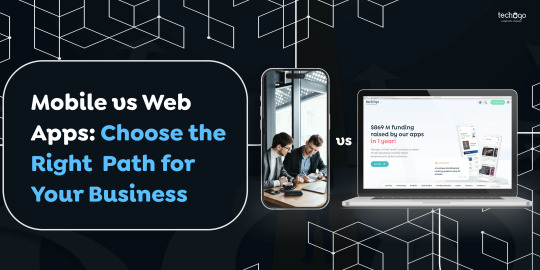
Explore the key differences between mobile and web apps to choose the best solution for your business. Learn how mobile apps offer seamless smartphone experiences and enhanced functionality, while web apps provide cross-platform accessibility. Whether prioritizing user engagement or cost-effectiveness, understanding mobile and web apps will help you make an informed decision to align with your business goals and succeed in the digital era.
#MobilevsWebApps#mobileappdevelopment#webappdevelopment#WebApps#WebApplications#progressivewebappdevelopment
0 notes
Text
Exciting Full-Stack Development Project Ideas to Boost Your Programming Skills and Innovation
Full stack development provides vast opportunities to create cutting-edge applications and develop your programming expertise. Notable project concepts include developing a blogging platform for content distribution and idea sharing or constructing a professional portfolio site to display your capabilities. A content administration system can facilitate digital asset management, while a messaging solution enables instant communication. Consider building an online retail platform for efficient shopping experiences or developing a health monitoring application to support wellness objectives. Community networking sites, vacation reservation systems, meal ordering services, music streaming applications, interactive gaming platforms, and task coordination tools represent additional compelling ventures to pursue.
To execute these concepts successfully, employ a comprehensive technology framework. For client-side development, utilize HTML, CSS, JavaScript, React.js, or jQuery. Technologies like Node.js, PHP, Ruby on Rails, or TypeScript prove effective for server-side implementation. Implement MongoDB or MySQL for data storage requirements, and utilize frameworks such as Angular, Laravel, Express, Next.js, or Django to optimize development processes. Incorporating APIs like RESTful or SOAP for JSON and XML data handling can strengthen your application's capabilities. These concepts can evolve through innovation and appropriate technical solutions into meaningful applications that create value.
#TechInnovation#SoftwareDevelopment#Programming#WebApps#FullStackProjects#FrontendDevelopment#BackendDevelopment#JavaScript#ReactJS#NodeJS#WebDesign#CodeLife#TechCareers#CodingCommunity#WebDeveloper#SoftwareEngineer#MySQL#MongoDB#APIDevelopment#TechStack#WebDevProjects#CodingJourney#DigitalInnovation#DeveloperLife#BuildWithCode#FullStackDevelopment#ProjectIdeas#WebDevelopment#Coding#rlogicaltechsoft
0 notes
Text

Mobile App Development: Native vs. Hybrid vs. Web Apps
Choosing the right app type for your business can be a game-changer! Our latest infographic breaks down the key differences between Native, Hybrid, and Web Apps—from performance and cost to development time.
Dive into the details and discover which approach fits your needs best. Check it out completely on our website!
#MobileAppDevelopment#NativeApps#HybridApps#WebApps#TechInsights#AppDesign#BusinessGrowth#AppStrategy#Infographic
0 notes
Text
JumpGrowth provides on-demand app development services for both mobile and web platforms. Their approach includes thorough discovery phases, user experience design, and iterative testing to ensure the final product meets client expectations.
0 notes